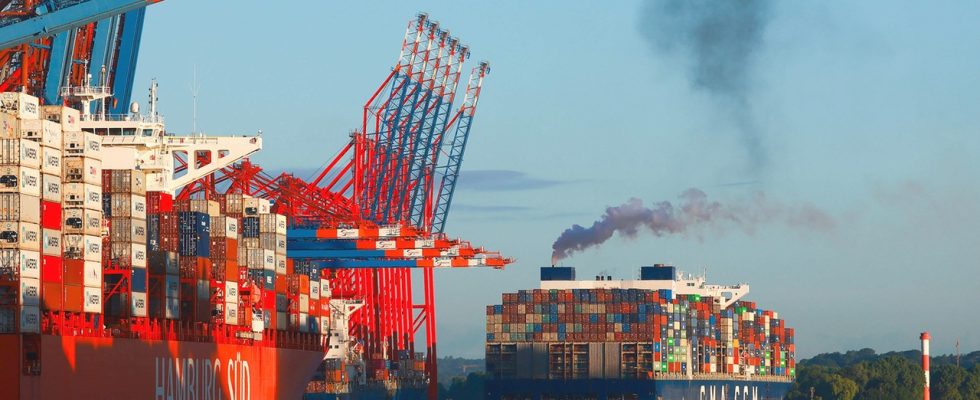Heavy oil or marine diesel – many ships still burn fossil fuels. The UN shipping organization has now agreed on new climate targets. By around 2050, people want to sail the world’s oceans in a climate-neutral manner.
The World Maritime Organization IMO has agreed on stricter climate protection requirements. Greenhouse gas emissions are to be reduced to zero “by 2050 or shortly thereafter, taking into account the different national circumstances”.
The 175 member states also agreed on intermediate targets for international shipping. By 2030, emissions are to be reduced by at least 20 percent compared to 2008 levels, and by at least 70 percent by 2040.
Shipping companies previously with voluntary commitment
So far, the IMO guidelines only halved emissions of greenhouse gases such as carbon dioxide by 2050 compared to 2008. Complete climate neutrality – i.e. how and when ships should sail the world’s oceans without any emission of greenhouse gases at the latest – has been put on the back burner until now. So it should only be achieved “as soon as possible in this century”.
The shipping industry had long advocated tightening the target. However, some developing countries and oil-producing states had blocked this until now. The German shipyard association VSM had therefore once accused the IMO of being “on the crawl” when it came to climate protection.
Individual shipping lines and companies had previously set their own targets that are more ambitious than IMO targets. The important Danish container shipping company Maersk and the cruise line Aida Cruises already want to work climate-neutrally by 2040, and the German Hapag-Lloyd by 2045.
“Historical Day for Shipping”
The general manager of the shipowners’ association VDR, Martin Kröger, nevertheless spoke of a “historic day for shipping”. The IMO regulation is something other than a voluntary commitment. Because shipping companies and shipbuilders operate worldwide, uniform international rules are necessary – also to create a level playing field within the industry.
For some environmental organizations, however, the IMO resolution does not go far enough. As a result, the rise in temperature will not remain below the internationally targeted 1.5 degrees Celsius, said John Maggs, President of the Clean Shipping Coalition.
Around 90 percent of global trade in goods is handled by ship. The often huge container ships mostly run on heavy fuel oil or marine diesel and some also on liquid natural gas LNG. These are all fossil fuels that emit CO2 when they are used. This means that around three percent of global CO2 emissions are attributable to international shipping.
battery powered Ferries and freighters using green methanol
Various solutions are currently being discussed for propulsion systems and fuels for the shipping of the future. An important factor will be whether the fuel is available in sufficient quantities everywhere. Weight and space requirements also play a role.
Batteries – as they are already common in car traffic – are only suitable for shipping on short distances. The shipping company Scandlines, for example, wants to use a battery-powered ferry between Germany and Denmark soon.
For long distances, ammonia and methanol are the most popular. “Ammonia is not an issue in container and passenger shipping at the moment – the safety concerns are simply too great,” says Hapag-Lloyd. Currently, the journey is more likely to go in the direction of methanol. Maersk has already ordered several freighters to run on green methanol. The first is scheduled to go into service this year as a feeder ship on the Baltic Sea.

